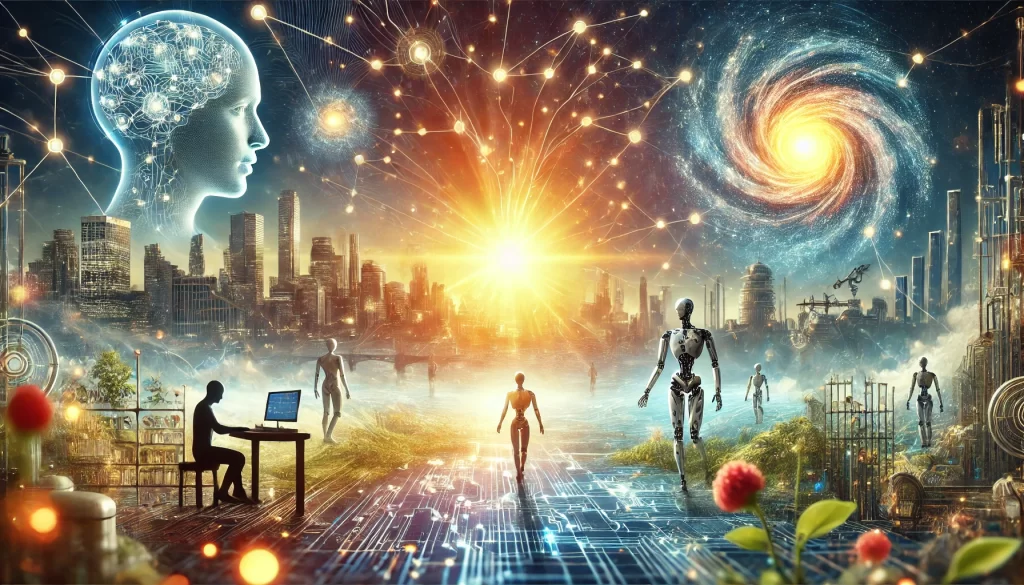
There’s something both exhilarating and unsettling about Artificial Intelligence.
It sparks our imaginations with what’s possible, yet it also stirs up questions about its place in our lives. Like any powerful innovation, AI challenges us to rethink not just what we do but how we do it – and, perhaps most importantly, why we do it. This is personal to me because the more I engage with AI, the more I’m reminded of the delicate balance between potential and purpose.
Adopting AI isn’t just about flipping a switch or adding a shiny new tool to our workflows. It’s about transformation – the kind that makes you pause and reimagine what’s possible. And like any meaningful transformation, it takes patience. This is a hard truth, especially in a world that’s conditioned us to expect instant results. When I first started incorporating AI into my work, I fell into the same trap of expecting quick wins. But the reality was humbling. AI didn’t immediately make everything faster or better. Instead, it asked me to revisit my processes, rethink my workflows, and even question some deeply held assumptions about what “work” should look like.
What I’ve come to realize is that AI is at its best not when we try to use it to mimic human intelligence but when it complements it. Think about the things humans are naturally good at: empathy, creativity, intuition. In my opnion, AI, atleast what we know it as today, doesn’t excel there and, if you were to ask me, it doesn’t need to. Instead, it shines in areas where we struggle: handling massive amounts of data, finding patterns we’d never see, and operating at scales and speeds that are impossible for us to match. This isn’t about replacement; it’s about partnership. It’s about building a bridge between what we do well and what we could never do alone.
But here’s the catch: AI developers are running at breakneck speeds, pushing the boundaries of what the technology can do, while most of us are still trying to understand how to use it meaningfully. The gap between development and understaning and adoption is real, and it’s widening. The AI applications we interact with today, whether it’s ChatGPT or Perplexity or some other tool, are impressive, but they’re just the surface of tsunami of options and opportunities coming through. Beneath that surface lies a world of possibilities we haven’t even begun to think, let alone explore.
This disconnect, between AI’s potential and our readiness to embrace it, isn’t just technical. It’s deeply human. It’s about how we think, how we make decisions, and how we adapt to change. For many individuals and organizations, the temptation is to treat AI like any other tool, to plug it into existing systems, to imagine it in the context of what, and how, we do, and then to hope for the best. But that approach misses the point. AI isn’t just a better tool; it’s a different way of thinking. And to leverage it fully, we have to be willing to change how we think about work, value, and even success itself.
I’ll admit, this isn’t easy. It takes humility to acknowledge what we don’t know and courage to step into the unknown. It takes effort to invest in reskilling and rebuilding, especially when the benefits feel distant or uncertain. And it takes vision to see AI not as a shortcut but as a long-term investment in what’s possible. But when we will get it right, the rewards, I believe, will be extraordinary. In my limited foray into the field, I’ve seen firsthand how AI can unlock potential in ways I never imagined, from helping me reimagine complex processes to better streamline them to opening up entirely new avenues of creativity contributions.
What’s clear to me though is that success with AI isn’t about speed; it’s about alignment. It’s about asking the right questions: How can AI amplify what we already do well? How can it help us tackle challenges we’ve been unable to solve? How can it help us understand what we dont even know we dont understand? And how can it push us to think bigger about what’s possible? The organizations and individuals who take the time to answer these questions – those who choose to approach AI not with fear or complacency but with curiosity and intention – will be the ones who I contend will truly harness its potential.
For me, the journey with AI has been deeply personal. Having ventured into machine learning during my Master’s program at the University of Illinois, I’ve gained an appreciation for and understanding of what goes on behind the scenes. This perspective has been invaluable in shaping how I approach and think about AI. It’s taught me to rethink not just what I do but why I do it. It’s reminded me that progress isn’t about moving faster but about moving with purpose. And it’s underscored the importance of seeing AI not as a replacement for human effort but as a collaborator in something greater than the sum of its parts. With intent and focus, I believe we can develop a shared understanding and excitement for AI.
If there’s one takeaway I can share, it’s this: The question isn’t whether AI can match human intelligence. The question is whether we can recognize its potential to extend our own.